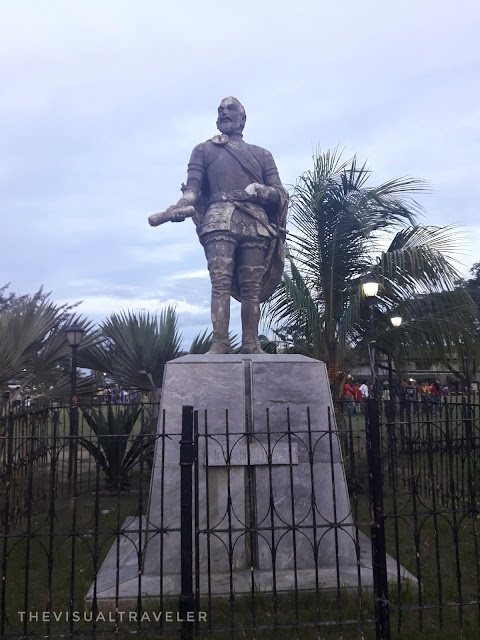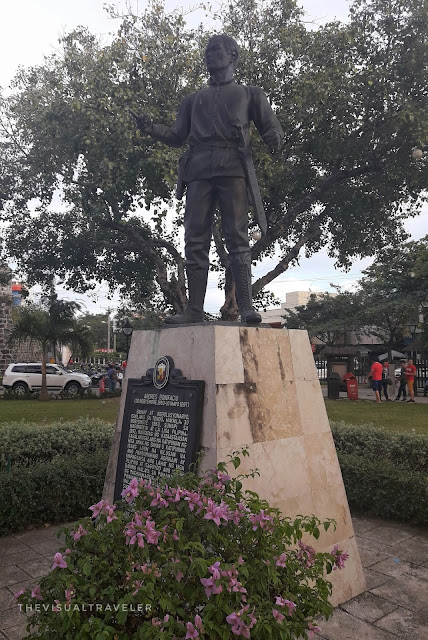12 Interesting Things to See in Plaza Independencia
London has it's Hyde Park. Central Park is synonymous with New York City. Chicago's Millenium Park attracts thousands of visitors. And Manila is known for Luneta Park. Urban areas need wide open spaces for its citizens to enjoy and feel a sense of community.
Plaza Independencia is the oldest and largest park in Cebu City that can be dated as early as the 1600s. In its four hundred years of existence, it has been called by several names. It was originally called Plaza de Armas when it was used as a Military training and parade grounds of Fort San Pedro.
When the area extended to include other civic buildings like the Gobierno Provincial and properties of the Cathedral of Cebu, it was named Plaza Mayor. In honor of the regency years of Queen Maria Cristina of Spain (1833-1840), it was renamed Plaza Maria Cristina.
The American Colonial Period brought another name change. To celebrate the chains of Spanish rule, it became Plaza Libertad.
Having lived in Cebu for years, it was only yesterday that I visited Plaza Independencia. I admit that I listened to naysayers who discouraged me from going to the park by their stories of ill-reputation and the people who normally frequent this civic space.
The closest I got to the park was when I went to the Post Office to have some letters mailed but that was years ago.
Last Sunday, for the love of History, I've finally visited Plaza Independencia. The 2011 rehabilitation saw a resurgence of park use and attendees. That Sunday afternoon, there was a Zumba class in the park square, families picknicking, students practicing their dance moves for their school projects, even groups of friends who were playing frisbee and cycling. The place was vibrant and alive.
I spent about an hour exploring the 4-hectare park and discovered some interesting features.
1. Fort San Pedro (Moog ng San Pedro)
Long after the Spaniards have left the Philippines, the first fort that they built still stands. It's smaller than Fort Intramuros in terms of size and height. The size could be relative to the Spanish population that the city had during that time.
 |
| Main gate of Fort San Pedro |
2. Antonio Pigafetta Statue
This homage to the Venetian Scholar and Explorer who served as Ferdinand Magellan's chronicler was a surprise to me. I was walking towards the statue and I was curious who it was when I saw the plume in its right hand; I guessed right away that it was Pigefetta.
He was one of the 22 survivors of the Magellan expedition who completed the circumnavigation of the world. The statue was a donation from the Italian Association of Cebu.
3. Miguel Lopez de Legazpi statue
The first Spanish Governor-General of the Spanish East Indies was a veteran conquistador when he sailed towards the Philippine Islands. He led a successful campaign and started the Spanish conquest of the country.
4. Andres Bonifacio statue
This monument honors the Father of the Katipunan who led the 1896 Philippine Revolution against Spain.
5. Legazpi Obelisk
Cebuanos sure love Miguel Lopez de Legazpi. There are 2 monuments dedicated to the Spanish conquistador in the Plaza. This obelisk which looks more like a lighthouse (which would be more appropriate) was commanded for Queen Isabela II in 1855.
6. Ramon Magsaysay statue
The only Philippine President who died in an accident, Ramon Magsaysay, was on his way back to Manila in the early hours of March 17, 1957 when the plane crashed in Mt. Manunggal.
7. War Veterans Memorial
This monument is a statement of the valor and patriotism of Cebuanos who dedicated their lives to the freedom of our country.
8. Filipino - Japanese Memorial
He was one of the 22 survivors of the Magellan expedition who completed the circumnavigation of the world. The statue was a donation from the Italian Association of Cebu.
 |
| Magellan's chronicler, Italian Antonio Pigafetta |
3. Miguel Lopez de Legazpi statue
The first Spanish Governor-General of the Spanish East Indies was a veteran conquistador when he sailed towards the Philippine Islands. He led a successful campaign and started the Spanish conquest of the country.
 |
| The ultimate Conquistadore, Legazpi |
4. Andres Bonifacio statue
This monument honors the Father of the Katipunan who led the 1896 Philippine Revolution against Spain.
 |
| The Katipunan Supremo, Andres Bonifacio |
Cebuanos sure love Miguel Lopez de Legazpi. There are 2 monuments dedicated to the Spanish conquistador in the Plaza. This obelisk which looks more like a lighthouse (which would be more appropriate) was commanded for Queen Isabela II in 1855.
 |
| The Legazpi obelisk has a light show at night |
6. Ramon Magsaysay statue
The only Philippine President who died in an accident, Ramon Magsaysay, was on his way back to Manila in the early hours of March 17, 1957 when the plane crashed in Mt. Manunggal.
 |
| Ramon Magsaysay was the 7th Philippine President |
7. War Veterans Memorial
This monument is a statement of the valor and patriotism of Cebuanos who dedicated their lives to the freedom of our country.
 |
| A tribute to the Cebu War Veterans |
8. Filipino - Japanese Memorial
This memorial remembers both Filipino and Japanese war dead during World War II.
9. Martial Law Memorial
"This marker is a testament to the courage of Cebuano martyrs whose lives were sacrificed in the fight against Martial Law."
10. Order of Augustinian Recollects
The OAR monument celebrates the 400th anniversary of the Order's presence in the Philippines and Asia. They founded the University of San Jose-Recolectos in Cebu.
11. Water Fountain
What's a park without a fountain. Water has a soothing and calming effect. And it's a welcome feature of Plaza Independencia.
12. Bandstand or Gazebo
A circular and elevated platform where musicians normally perform in plazas, parks or gardens.
We need more parks and gardens where we can disconnect from the hustle and bustle of living in a city. I hope Cebu will be able to maintain and improve Plaza Independencia so that more folks would appreciate it.
 |
| War is painful and we should never experience it again. |
9. Martial Law Memorial
"This marker is a testament to the courage of Cebuano martyrs whose lives were sacrificed in the fight against Martial Law."
 |
| Never forget the suffering. Never forget the losses. |
10. Order of Augustinian Recollects
The OAR monument celebrates the 400th anniversary of the Order's presence in the Philippines and Asia. They founded the University of San Jose-Recolectos in Cebu.
 |
| 400 years of dedicated service to the Filipinos |
11. Water Fountain
What's a park without a fountain. Water has a soothing and calming effect. And it's a welcome feature of Plaza Independencia.
 |
| Water is life |
12. Bandstand or Gazebo
A circular and elevated platform where musicians normally perform in plazas, parks or gardens.
 |
| Bandstands are not a thing of the past |
We need more parks and gardens where we can disconnect from the hustle and bustle of living in a city. I hope Cebu will be able to maintain and improve Plaza Independencia so that more folks would appreciate it.




Komentar
Posting Komentar